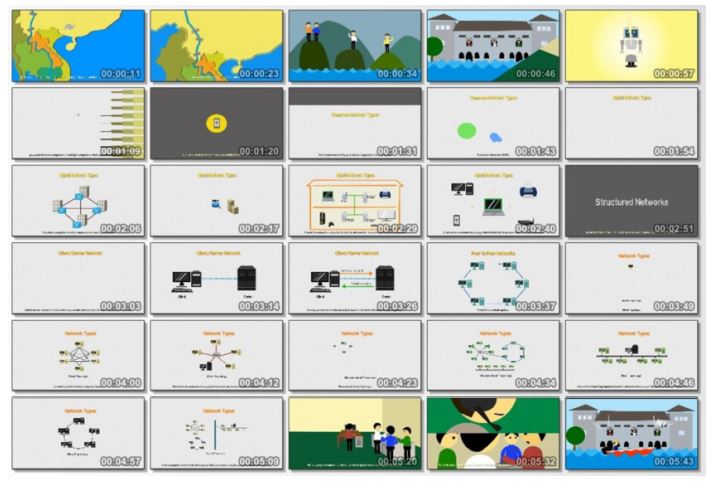The Comparative Study of Multimedia Technological Applications Enhancing Active Self-learning in Online Course
Main Article Content
Abstract
Multimedia and modality-based instruction have been broadly applied to learning and teaching in the twenty-first century; they afford an authentic learning experience. This paradigm shift has pushed learning forward based on computer-based media since the early twenty century. Previous studies showed that using visual and verbal multimodal media can help to increase learning efficiency. However, most investigations seem to focus on a single mode or medium to increase learning efficiency; it is difficult to use these results to claim that one medium can be suited for every type of content since every medium has its own limitation of capability. This paper examines three types of media genres: an unanimated slide presentation, blended info- and motion graphics and an interactive game. These media were applied with an online course of Introduction to Information Technology in Data Communication and Networking for 286 undergraduate students at Mae Fah Luang University, Thailand during 2015. The results show that the students chose to learn from the blended info- and motion graphics and the interactive game more than the unanimated slide presentation; the interactive game is more attractive to the students if it is enjoyable. The most significant media design factors that encouraged and helped the students become better self-learning are content design (87.5%), continuity and color design (80.4%) and sound design (78.6%) respectively. Image, sound, motion, and interactivity are multimodalities that helped to keep learner attention. The most appropriate length for media such as the blended info- and motion graphics learning activities was about 5-10 minutes.
Article Details

This work is licensed under a Creative Commons Attribution-NonCommercial-NoDerivatives 4.0 International License.
References
B. Nobaew, “The Comparative Study of Multimedia Technological Applications Enhancing Active Self-learning in Online Course.”
W. Westera, “Reframing the role of educational media technologies,” Q. Rev. Distance Educ., vol. 16, no. 2, p. 19, 2015.
B. Nobaew, “THE ROLE OF VISUAL GRAMMAR AND PLAYER PERCEPTION IN AN ONLINE GAME,” Videnbasen for Aalborg UniversitetVBN, Aalborg UniversitetAalborg University, Det Humanistiske FakultetThe Faculty of Humanities, 2015.
R. B. Kozma, “Learning with media,” Rev. Educ. Res., vol. 61, no. 2, pp. 179–211, 1991.
I. Yengin, A. Karahoca, D. Karahoca, and H. Uzunboylu, “Deciding which technology is the best for distance education: Issues in media/technology comparisons studies,” Procedia Comput. Sci., vol. 3, pp. 1388–1395, 2011.
J. P. Gee, “New Digital Media and Learning as an Emerging Area and ‘Worked Examples’ as One Way Forward.”
W. Westera, The Digital Turn: How the Internet Transforms Our Existence. AuthorHouse, 2012.
M.-T. Cheng, T. Su, W.-Y. Huang, and J.-H. Chen, “An educational game for learning human immunology: What do students learn and how do they perceive?,” Br. J. Educ. Technol., vol. 45, no. 5, pp. 820–833, 2014.
J. Kirriemuir and A. McFarlane, “Literature review in games and learning,” 2004.
F. Bellotti, R. Berta, A. De Gloria, and V. Zappi, “Exploring gaming mechanisms to enhance knowledge `acquisition in virtual worlds,” in Proceedings of the 3rd international conference on Digital Interactive Media in Entertainment and Arts, 2008, pp. 77–84.
C.-H. Lin, E. Z.-F. Liu, and J.-L. Shih, “Analysis of Seven Important Studies in Research of Joyful Learning and Society,” in Digital Game and Intelligent Toy Enhanced Learning (DIGITEL), 2010 Third IEEE International Conference on, 2010, pp. 231–233.
N. Goodman, Languages of art: An approach to a theory of symbols. Hackett publishing, 1968.
C. Fadel and C. Lemke, “Multimodal Learning Through Media,” in Encyclopedia of the Sciences of Learning, Springer, 2012, pp. 2378–2381.
M. D. Dickey, Aesthetics and design for game-based learning. Routledge, 2015.


